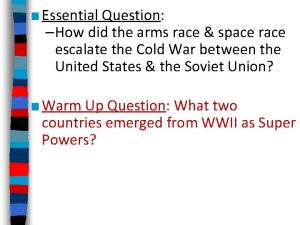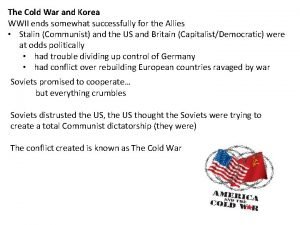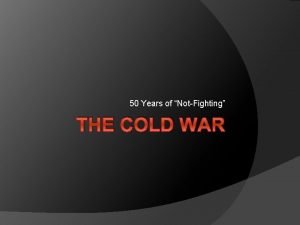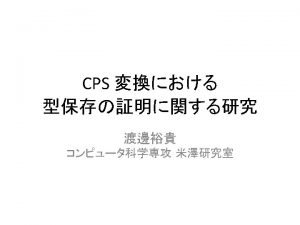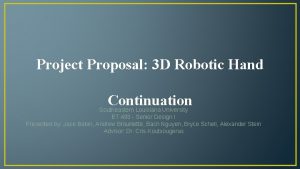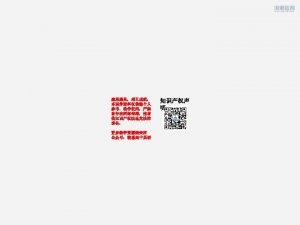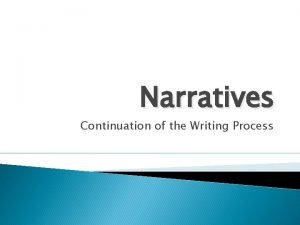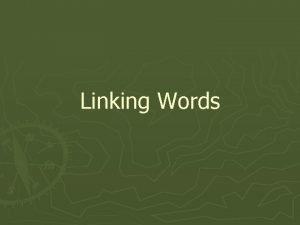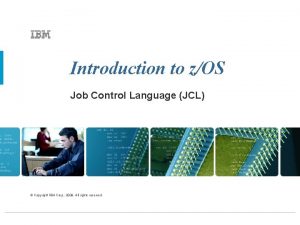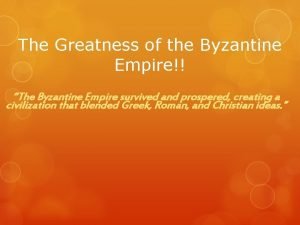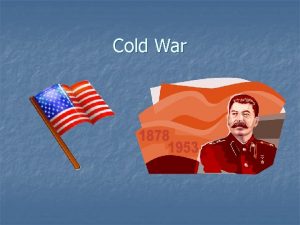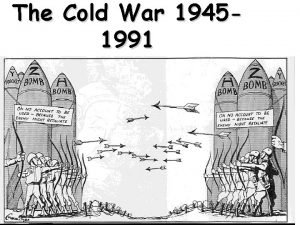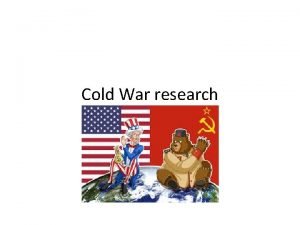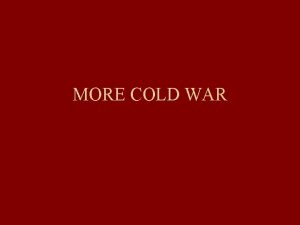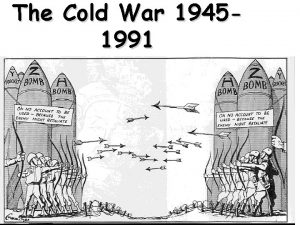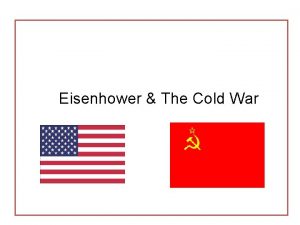Continuation of the Cold War during the 1950s











- Slides: 11

Continuation of the Cold War during the 1950’s By Johnson and Josiiaaaah

Key Topics • Development after Truman and Stalin • Khrushchev and Soviet motivation, bid for improved relations, cuts in the red army and withdrawal from Austria • Concept of peaceful coexistence • Eisenhower, Dulles and Kennedy’s responses • Roles of personalities • Paris Summit, U 2 incident and Vienna summits • Impact of the failed Hungarian uprising • Tensions over Berlin

Timeline of events 1950 • February – Sino-Soviet Alliance • June – Korean War 1953 • 5 th March – Stalin’s Death • 27 th July – Ceasefire in Korea 1955 • May – Warsaw Pact Established • July – Geneva Summit 1956 • February – Khrushchev Critical of Stalin in secret speech • November – Soviet Troops in Hungary 1958 • August – Taiwan Straight crisis Developments • November – Start of second Berlin crisis

Death of Stalin • Stalin was found on the floor covered in urine after suffering a stroke on the 1 st March, he died four days later. • Sigh of relief in west as he was seen as the dominant factor in development of the Cold War. • Liberal historians have emphasised the role of personalities and the impact of Stalin’s death on the thaw.

Development after Truman and Stalin • New Look policy adopted by Eisenhower after Truman left office. • Use of military means to contain communism and the policy of massive retaliation. • However, the New Look policy seemed unlikely to produce compromise. • The policy of brinkmanship was devised by Dulles to get on the verge of war without actually getting into it. • This was a risky strategy which was hard to master without inevitably getting into war.

Khrushchev and Peaceful Coexistence • Khrushchev believed in Marxist idea that capitalism would ultimately fail, so the idea of peaceful coexistence was the best of way of conducting relations. • Khrushchev said ‘there are only two ways – peaceful coexistence or the most destructive war in history. There is no third way. ’

Impact of Peaceful Coexistence • There was a ceasefire in the Korean War in 1953. • The Austrian State Treaty was signed in 1955. Both the US and USSR would withdraw its armed forces from Austria. • Soviets withdrew from Finland in 1956. • This reduced tension between the two superpowers.

De-Stalinisation • De-Stalinisation within the USSR was the brain child of Khrushchev. He wanted to move away from Stalin’s policies and liberalise, but there were limits. • The uprising in Hungary showed that the liberalisation would not be able to threaten the security of the Soviet Bloc.

Hungarian Uprising, 1956 • Soviets invaded Hungary to restore government to their own liking after Nagy caved in to popular protest for reform. He was replaced by Kadar. • These actions showed a willingness of the soviets to maintain a hold over it’s eastern sphere of influence.

U 2 incident and Paris Peace Summit • During the Paris Summit a U-2 spy plane was shot down over Russia after the US promised to respect the fly-zone ban. • This increased distrust between the two superpowers and Khrushchev walked out the summit.

Exam Style Question • To what extent was the development of the post Stalinist thaw in superpower relations between 1953 -1962 the result of Khrushchev’s policy of peaceful coexistence?
 Lesson 1 the origins of the cold war
Lesson 1 the origins of the cold war Sides of the cold war
Sides of the cold war Why did the arms race escalate during the cold war?
Why did the arms race escalate during the cold war? Neutral countries in cold war
Neutral countries in cold war All communist countries during the cold war
All communist countries during the cold war Continuation-passing style
Continuation-passing style Continuation project proposal
Continuation project proposal Continuation writing
Continuation writing Spitnaz
Spitnaz Linking words to express consequence
Linking words to express consequence Zos jcl
Zos jcl Byzantine empire flocabulary
Byzantine empire flocabulary


